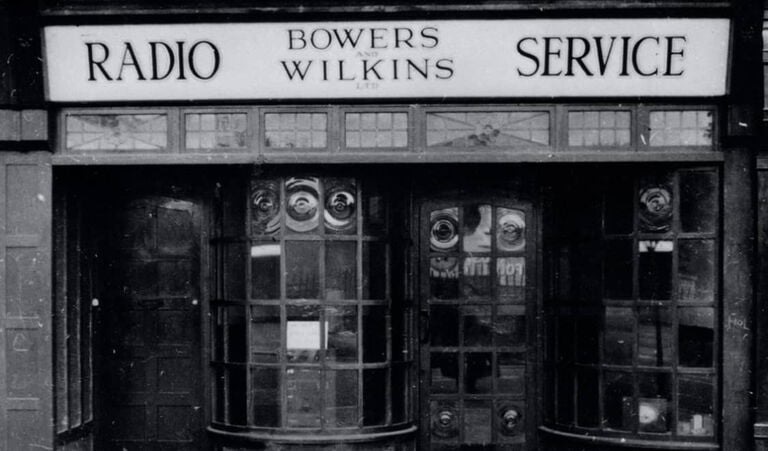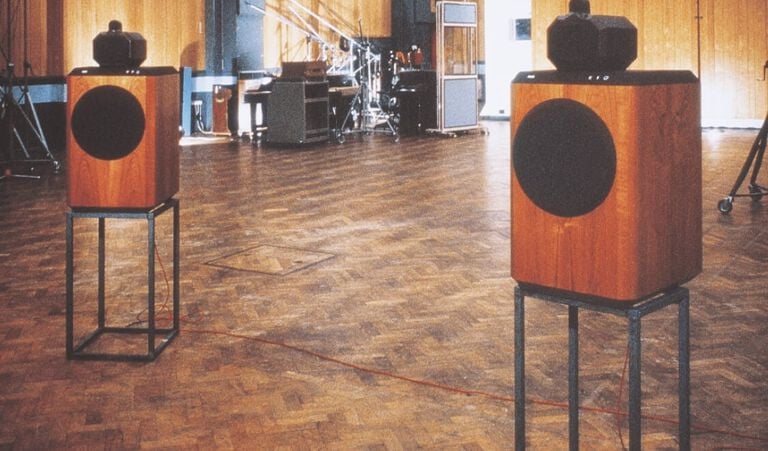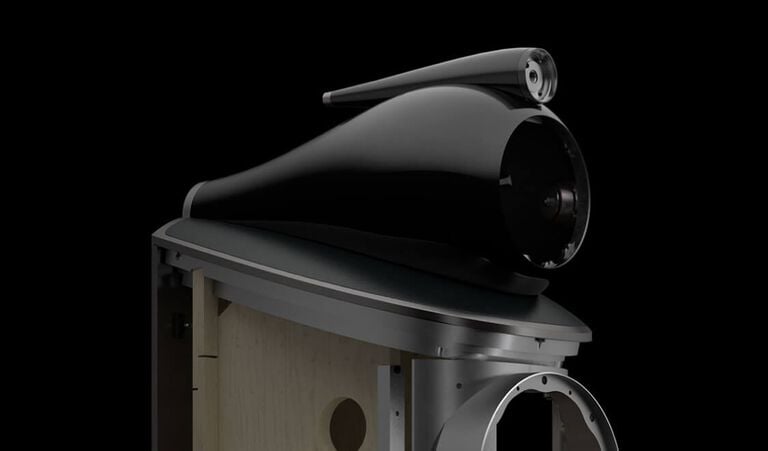Flagship, icon, legend
Nautilus is all that and more. Despite being almost 30 years old, this remarkable loudspeaker can still turn heads and win hearts.
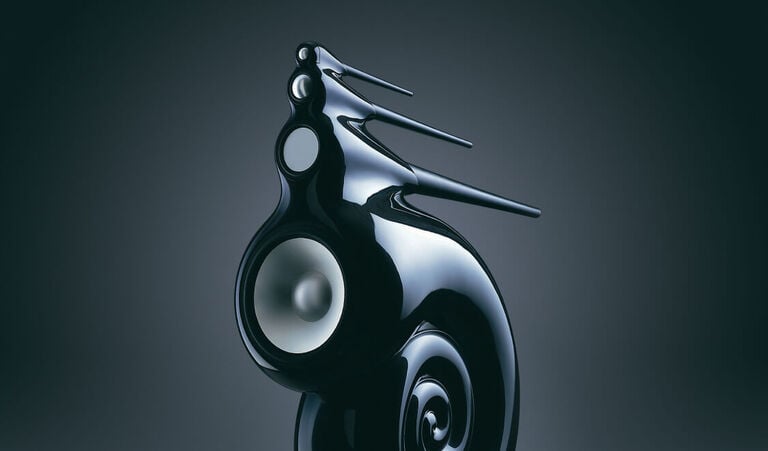
Everything about Nautilus seems unlikely. For starters, there’s the way it looks – and it’s hard to imagine a more dramatic or unconventional form in any loudspeaker, never mind one that’s been around for almost three decades. Then there’s the price, of course; £57,750 is a very healthy sum of money to be spending on your dream car, never mind your dream loudspeakers. But perhaps the most unlikely aspect of all is the story of how Nautilus first came to be. This is no ordinary product, not in any sense of the word.
Let’s go back to the beginning. Right from the outset, John Bowers recognised that the shape and structure of a loudspeaker cabinet exerted a huge influence on the overall sound of his loudspeaker designs. One of his earliest products, the astonishingly avant-garde DM70C, perfectly encapsulated the agility of his thinking: he wasn’t going to let his quest for True Sound be compromised by something so humdrum as a mere ‘box’. Essentially, he wanted to create a loudspeaker that didn’t sound like a loudspeaker at all – rather, it would deliver a performance so realistic, the listener would believe they were experiencing the live event itself, or the best-possible recording of that event.
That led to a lot of innovative thinking. During the 1970s, most of it centred on using new forms and structures for cabinets: the Tweeter-On-Top configuration came first, followed by the three-enclosure construction of the mighty 801. Then there was Matrix bracing, another attempt to quieten the cabinet to the point where it became inaudible. But alongside these development projects – all of which yielded both successful products and core Bowers & Wilkins technologies that we still use to this day – John also pursued another, altogether more experimental line of research that wasn’t linked to any particular timeline or project requirement.
According to the Head of Research at SRE (the Steyning Research Establishment) at the time, Dr Peter Fryer, the inspiration for what would become Nautilus “came right from the top. John Bowers was totally obsessed with perfecting loudspeakers. He wanted his company to start digging thoroughly into all aspects of speaker design and come up with something very special. It didn’t have to make money or sell in great numbers. It just had to be done – a bit like climbing Everest.”
At one point, for example, John’s energies were concentrated on developing dipole or backless loudspeakers, where rearward-travelling sound waves could radiate freely away from the drive units. This, in theory, meant you lost the acoustic impact of the cabinet ‘contribution’, because in a typical loudspeaker, high and midrange frequencies tend to travel in a beam, front and back, meaning that rearward-travelling sound waves sometimes rebound off internal cabinet surfaces.
In the end, the backless dipole proved to be a blind alley: no matter how inventively shaped the prototype, listeners could always identify the character of the individual cone materials used in the drive units. And then, very sadly, John passed away in late 1987 after a brief battle with cancer, so it fell to the engineering team at SRE to carry on the quest – and in particular, to Laurence Dickie.
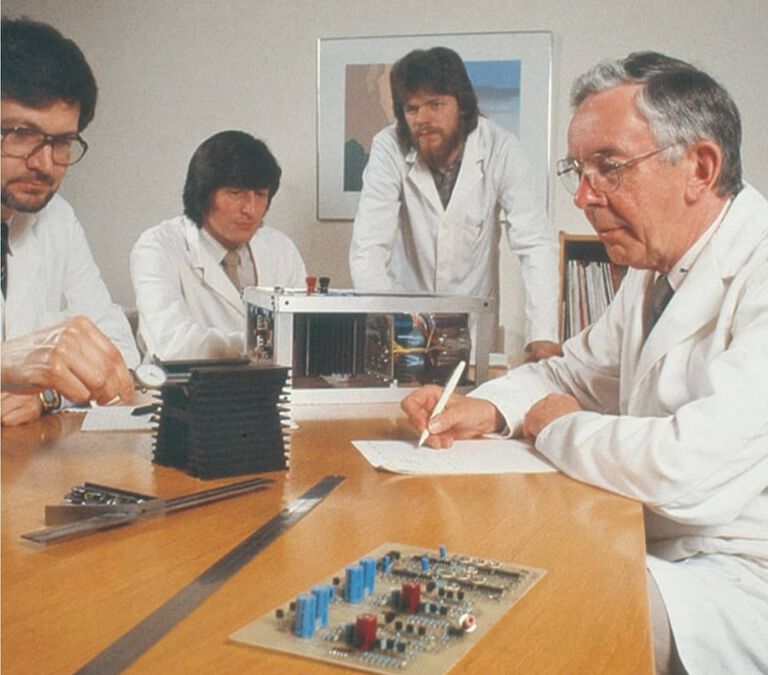
John Bowers was totally obsessed with perfecting loudspeakers.
– Dr Peter Fryer
A different approach
According to Dr Fryer, John deliberately gave the task of carrying on his project to just one engineer, “with a very simple brief of looking into everything and doing whatever was necessary, however unconventional, to make the best speaker anyone had ever heard.” Laurence Dickie – Dic, to all his colleagues – was that engineer.
Dic decided on a new approach. Instead of an open-backed dipole, he returned to the idea of a loudspeaker enclosure, but set about re-evaluating how the enclosure itself worked. Doing away with a conventional box and instead, mounting the speaker drive units in long, straight ‘transmission-line’ cylinders proved promising: using pipes filled with absorbent fibrous wool, the structure of the cabinet would seek to absorb sound, essentially making each enclosure a reversed version of a conventional horn.
In another big step forward for the time, Dic chose to combine that structural approach with new thinking on drive units. Bowers & Wilkins was using flexible cones in the midrange of all its loudspeakers at that time, with its iconic yellow aramid fibre diaphragm becoming world-renowned in the 801 and many other designs in the portfolio. But Dic wanted to go another way, using stiff, pistonic cones across every aspect of the frequency range. It was an exotic approach for sure – one that remains undeniably difficult to scale to smaller and more affordable loudspeakers. Stiff domes tend to have a fairly limited bandwidth, so to reproduce every aspect of the frequency range correctly, the prototype designs had to adopt a four-way, rather than three-configuration – with two midrange cones, rather than one (one dedicated to lower midrange frequencies, the other to the upper portion). But remember that brief: John had decreed that the aim was simply to deliver the best speaker anyone had ever heard, not something fixed to a given cabinet form, price-point or timescale.
So, armed with that freedom to act, Dic took the aluminium tweeter concept used in the 801 and scaled it to a series of increasingly larger aluminium midrange cones with the aim of ensuring that the ‘audibility’ issue that had so plagued those earlier dipole and backless speakers (where listeners could identify the character of each cone) would simply not be an issue in this instance. With every cone made from the same material, the theory was you could no longer hear any transition in character as the speaker operated.
An ugly duckling takes flight
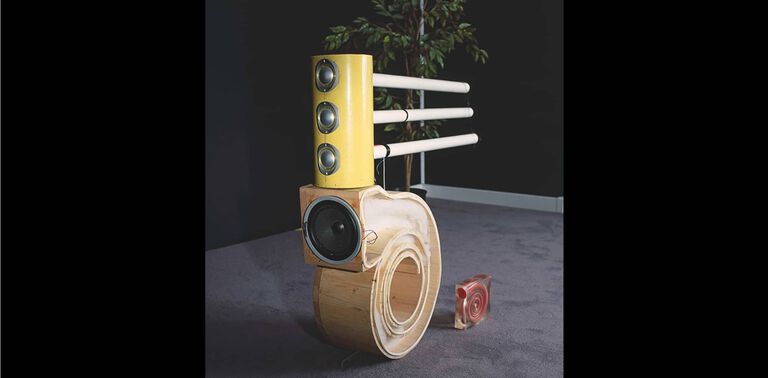
At this point, the fledgling that would eventually grow into Nautilus was a decidedly odd-looking bird. In all the early prototype work, three midrange and high-frequency ‘tubes’ were mated to a conventional closed-box bass enclosure, similar in concept to the approach used in 801. However, listening tests were less than satisfactory, showing a very notable discontinuity in character between the bass of the speaker and the sound of the other three drive units in the system – precisely what Dic was trying to avoid. It swiftly became clear that to match the sonic purity of the other three aluminium drivers in their respective transmission-line housings, the bass driver would also need its own pipe. And that was a problem, because using that same straight-tube approach for a 30cm (12in) bass driver would require a straight tube some three metres in length. Striking, yes, but not exactly domestically friendly.
So it was back to the drawing board. Experiments showed that tapering the horn shape and then curling it up would perform just as well but would occupy a much smaller volume than a straightforward, constant cross-section pipe. With that breakthrough in mind, the Nautilus as we know it really began to take shape. The tapering tube approach was incorporated into the other three tubes: as the volume of each tube reduced, it compressed the damping wool inside each tube more firmly and further reduced pipe resonances into the process. With all four drivers acting as perfect pistons within their allotted frequency bands, the prototype design was able to create a truly seamless, three-dimensional sound stage, accurately reproducing all the fundamental frequencies.
The Nautilus is born
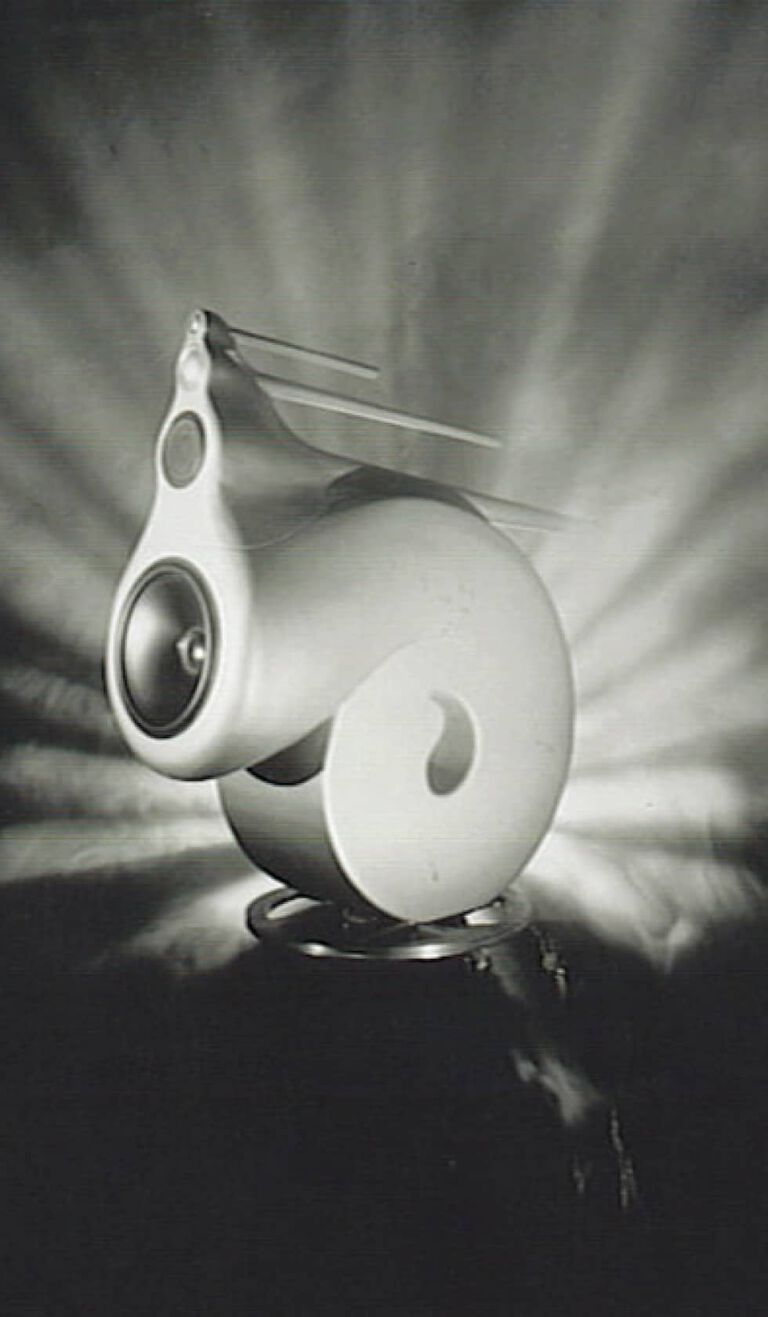
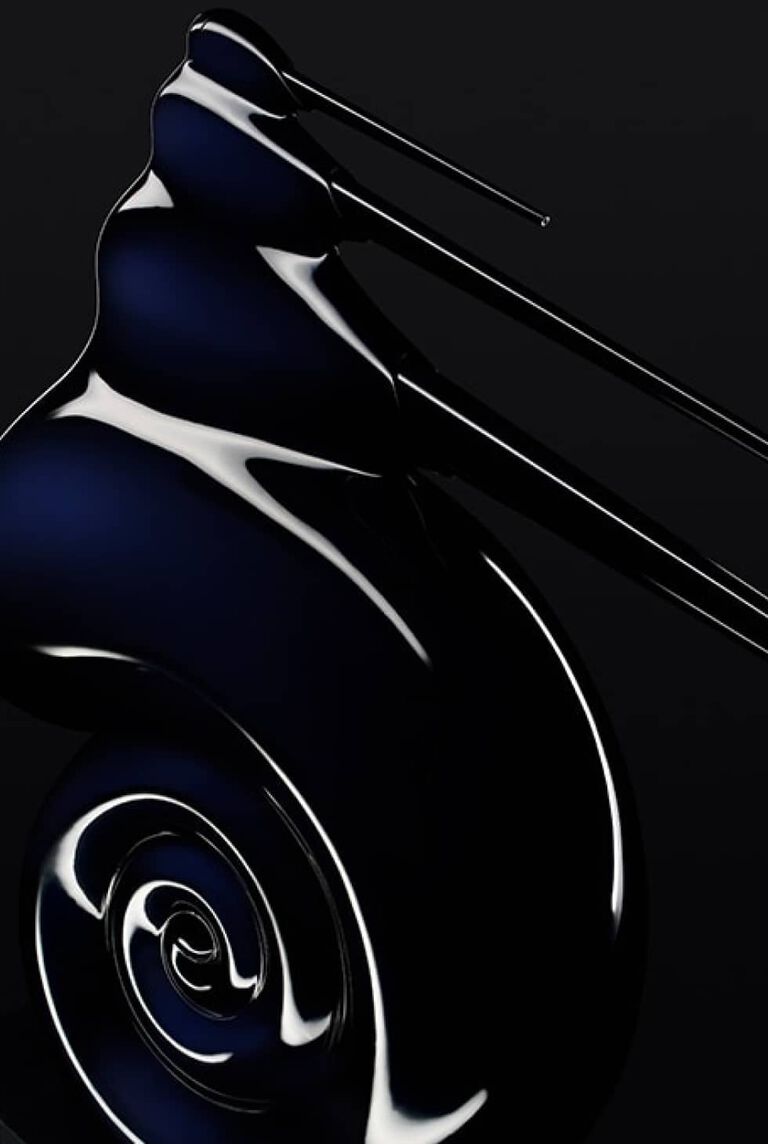
This new form and new approach to drive unit design would still need the final flourishes of aesthetic refinement: you can see from some of the 1991 and 1992 prototype images that while the overall shape had evolved to its recognisable modern form, there was still some work to do to hone it into the final Nautilus form. That task fell to Alison Risby, from Brighton College of Art, who carefully sculpted the almost-there form, adding nuance and curve to Dic’s acoustically correct structures. And finally, after almost five years of work, the Nautilus was born.
But where did the name itself come from? Dic can take credit for that one, although he’s at pains to point out that his creation’s shape has just as much in common with the humble snail as it does with the more exotic marine mollusc. Indeed, he recently joked that at one stage, the team was seriously considering christening their new loudspeaker ‘Brian’, in homage to the snail of the same name in the then-popular TV show, The Magic Roundabout. We’re glad they had a change of heart – although even today it’s common in Bowers & Wilkins circles to refer to a pair of Nautilus, with affection and not a little irreverence, as ‘Snails’.
Dic left Bowers & Wilkins in 1997, but his creation lives on in the Bowers & Wilkins portfolio. And as you would expect, making Nautilus requires just as much skill as engineering it in the first place. These days, cabinets are made in Dale Road, Worthing, and take the form of three sections – a front, plus left and right half-sections. These have to be joined together and painstakingly sanded to manage away any visible ‘edges’ – and that’s just the start of the labour of love that goes into the build process. Paint is sprayed by hand – typically, with 12 coats of paint and lacquer, although that varies depending on the finish the client selects. As standard, Nautilus comes in silver, black or midnight blue, but optionally you can have any colour you want, subject to feasibility. We’ve seen customers match their Nautilus to classic Ferrari Rosso Corsa red and Porsche Viper Green, to modern Audi Daytona Grey and even – remarkably – to nail varnish pink. And perhaps the most laborious process of all is the final step, the meticulous machine polishing of those sensual curves to create the stunning, lustrous finish that is so fundamental to the design’s allure. It takes three days to polish a Nautilus to the required standard. That’s three days per speaker.
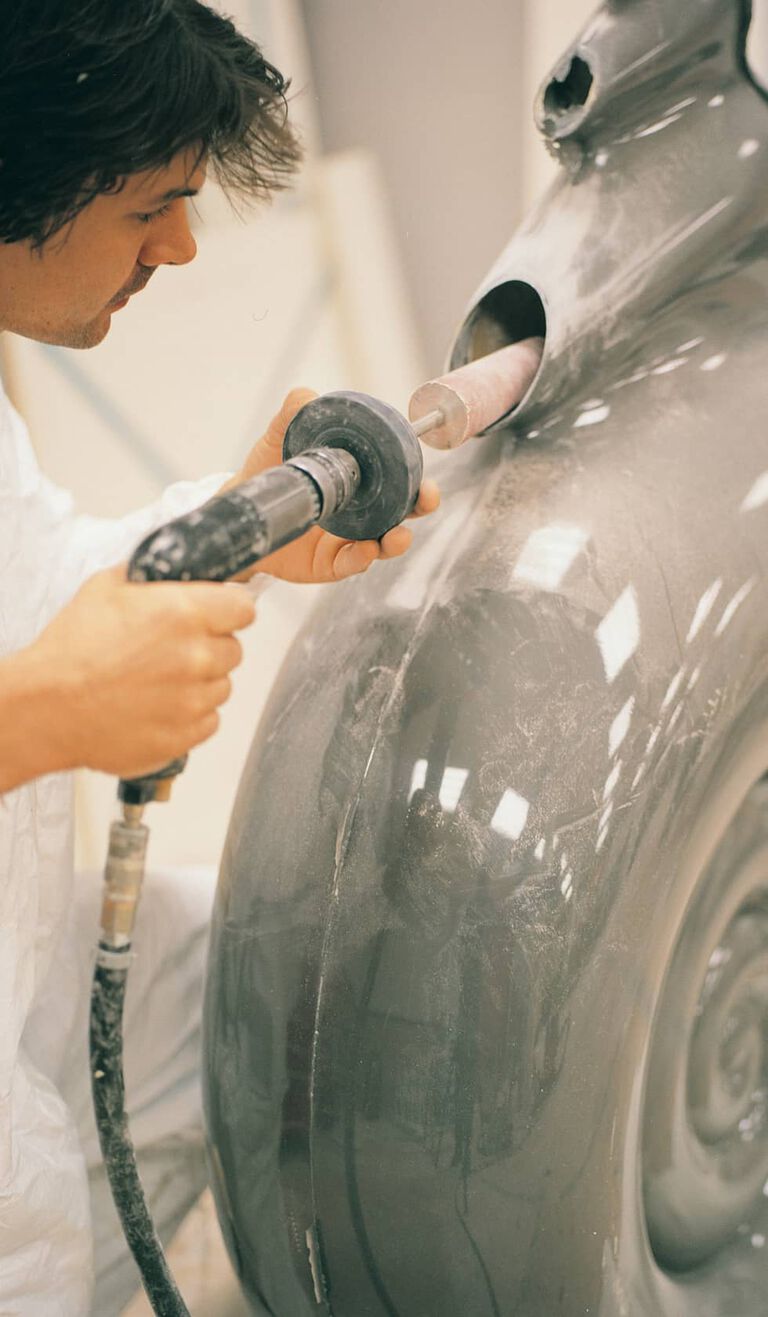
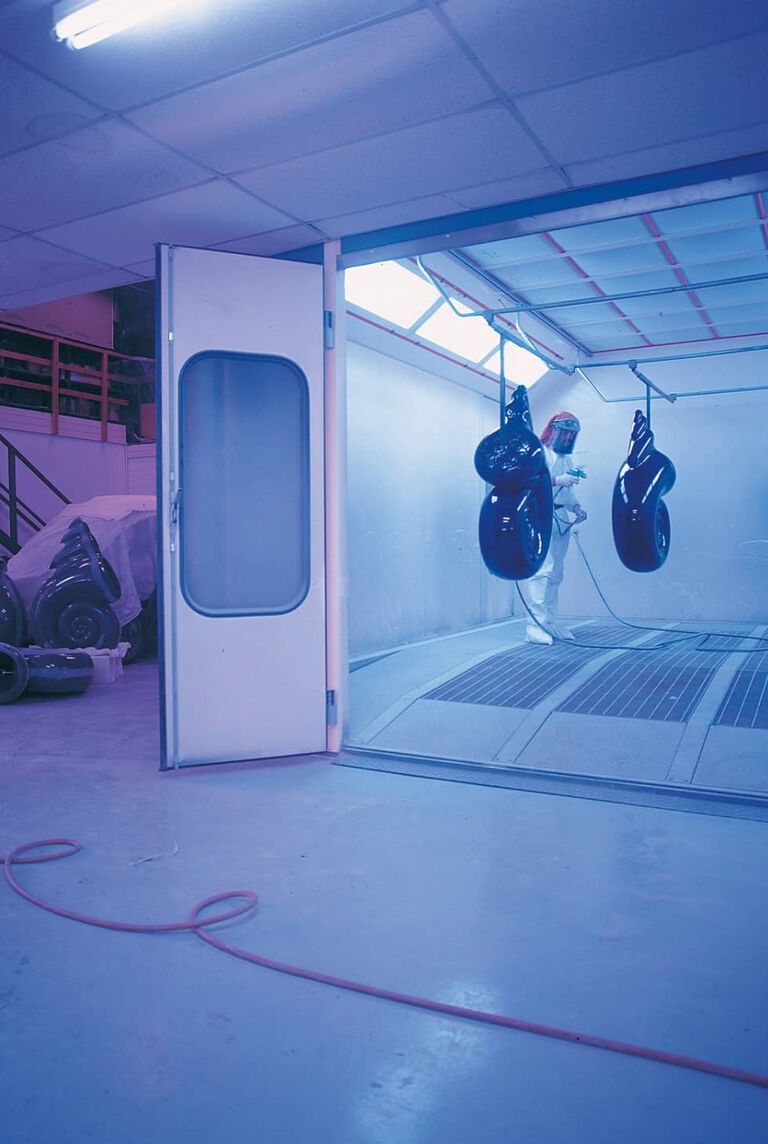
Install and set-up takes skill
Nautilus takes know-how to install correctly, too. Technically, it’s a semi-active design, with an external crossover network positioned between the preamplifier and power amplifiers. Each crossover is carefully matched to each drive unit at the factory at the time of construction: if you are unfortunate enough to damage a drive unit in the future and require a replacement, the crossover may need to be adjusted to correlate correctly to that new driver.
That configuration means each drive unit requires its own power amplification, so to drive Nautilus you’ll need eight monobloc power amplifiers per pair – or four stereo amps at a pinch. And amplifiers of 100w upwards are recommended, with 500w being optimum for the low frequency drive unit. So essentially, you need to budget on spending pretty much the same again (or more) on source components and amps as you do on the speakers themselves.
And finally, there’s the inherent character of the speakers themselves. Nautilus has extraordinarily wide imaging and exceptional dispersion: it throws out a lot of energy. Depending on the acoustics of your listening room, you may find that causes problems – it’s not uncommon to find absorption on the ceiling in rooms that are dedicated to use with Nautilus.
And yet…and yet, despite all the time and effort it takes to make, despite its complexity, cost and the added expense required to get it up and running, Nautilus remains, as we said at the start, an icon of our brand. We’ve been making it for almost 30 years and even today, it’s still a special thing to behold. Unlike 808, it wasn’t designed to hit a sound pressure level target; unlike 801, it was never intended to be both wonderfully accurate and robust enough to cope with the demands of studio life. Nautilus is far too fragile – and being honest, fussy – to stand up to that sort of rigour. It’s the ultimate exotic, rare, demanding but fabulously rewarding for those that can afford it and accommodate its foibles. It was designed to the best speaker anyone had ever heard, full stop. And remarkably, some of its devotees would argue that after all these years, it still is.
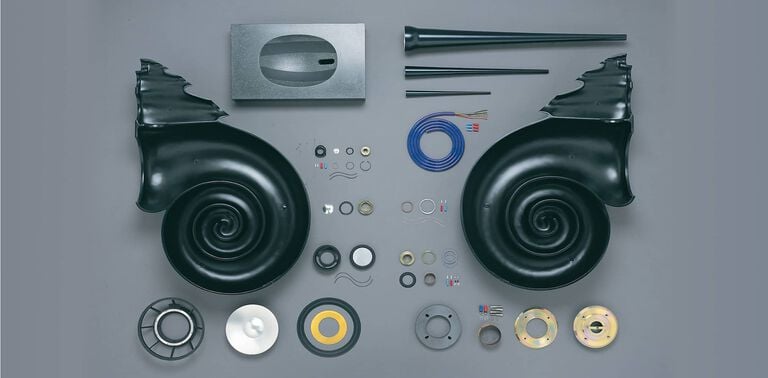
We’ll leave you with one last thought. We’re often asked why we don’t put a diamond tweeter into Nautilus. The answer, of course, is that simply changing the tweeter alone wouldn’t work: remember, Dic’s original design called for identical cone materials across all the drive units precisely because that ensured no audible transition in character across the frequency range. So in other words, putting a diamond tweeter into Nautilus would also mean developing three other larger diamond domes, including a 30cm (12in) diamond bass cone. Well, let's just say ‘that’s not going to happen’ and leave that one there, shall we…
